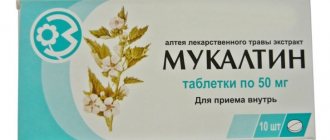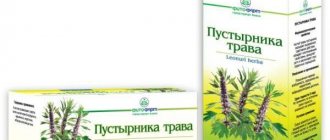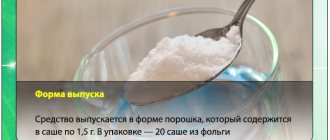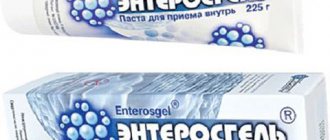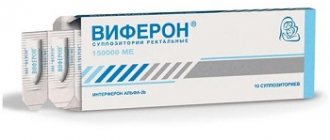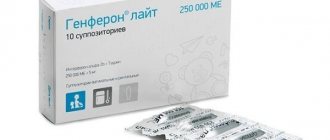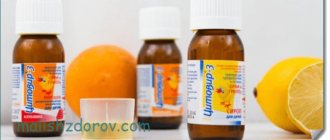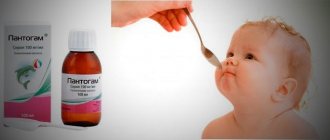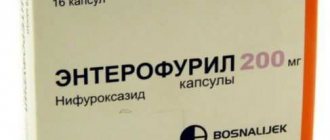Our children quite often suffer from colds, which are almost always accompanied by a runny nose and cough. During this period, the main thing is not to start the disease, but to make the right decision.
For dry and wet coughs, doctors often recommend Ambrobene syrup for children , and today, after reading the instructions for use and reviews, we will talk in detail about what this remedy is and how effective it is.
Application
- Ambrobene is recommended for children suffering from dry cough. This kind of cough is the most unpleasant and debilitating and, naturally, affects the child’s character. In this case, children become restless, capricious, sleep poorly and sometimes lose their appetite.
- The medicine helps relieve the main symptoms of this phenomenon, and relief is noticeable within half an hour. Children are recommended to take the drug in syrup form. Children enjoy it and it is safe.
- It is recommended to make a sweet solution from the drug in tablet form by mixing the medicine with sweet tea or boiled water, and only then give it to the child.
- The medication is convenient to use in inhalations; they also relieve the first symptoms of dry cough, colds and bronchitis.
Operating principle
This medicine belongs to the group of mucolytics or secretolytics, because it promotes the formation of mucus in the bronchial tree. Once in the body, the syrup is almost immediately absorbed and enters the lung tissue.
Next, the active substance (ambroxol hydrochloride) activates the formation of sputum glycoproteins and changes the structure of polysaccharides. This causes the mucus to thin out, making it much easier to cough up.
Ambrobene also helps improve motor activity of the respiratory tract. It affects the ciliated epithelium, increasing mucociliary transport, so the cilia located on the cells begin to actively move, and expectoration becomes much easier.
Inhalations
The medication is recommended for use during inhalation, which effectively removes phlegm. The procedure is carried out using a nebulizer or inhaler operating without steam. The instructions describe the rules in detail.
- For children under two years of age, use 1 ml twice / 24 hours.
- Children from 2 to 5 are given 1 ml three times a day.
- From 5 to 12, use 2 ml three times a day.
The solution for inhalation is mixed in equal doses with saline solution. The temperature of the liquid should be at room temperature.
Important: during inhalation, ensure a calm and comfortable environment around the baby, do not allow the baby to be capricious.
Reviews
We bring to your attention several reviews about this medicine.
- The child of user Helena_M is 5 years old and often suffers from a dry cough. They tried many different remedies, but it was Ambrobene syrup combined with plenty of drinking that really helped. It helps not only children, but also adults, it tastes good and is easy to use.
- Margo_B has a 2.5 year old son. The cough began to plague me before the age of 1 year, and then the doctor advised me to try this remedy. The result was pleasantly surprising, the drug is really effective, they still use it if necessary. But for there to be an effect, you need to drink a lot of fluid, doctors don’t talk much about this, so she advises you to carefully read the instructions and read them in detail.
- A user with the nickname Matryona Vasilyevna has two children, and in the autumn they often get sick. Recently, the youngest began to have a wet cough and, already having experience, she gave him Ambrobene in the form of syrup. After just 3 days, the condition improved significantly, and the baby easily coped with phlegm.
- Kissunia shares her story. She treated her daughter with this remedy twice. The first time the therapy was comprehensive and helped, the second time the girl ate too much candy, and due to allergies she developed allergic laryngitis. Treatment was not possible, and Ambrobene came to help. The cough went away in just a few days. So the medicine did its job.
- The user ✘odyayaEmotsia has 2 children, and it so happened that they and their mother got sick. We were treated with various drugs, but the cough did not go away. She went to the pharmacy and was advised to take syrup. Already on the third day there was a positive effect, and the little ones’ cough went away. Convenient, pleasant taste, and the effect really works.
Syrup
Photo of Ambrobene syrup.
Click to enlarge. It is recommended to give the product in syrup form to children under one year of age; it is easier for babies to drink and tastes good. The product is available in a glass container and comes with a measuring cup. It is recommended to take the medicine during or after meals.
- Up to 2 years of age, infants (except newborns and premature infants) are offered 0.5 tsp. (2.5 ml) daily.
- From 2 to 5 years old, give 0.5 tsp. (2.5 ml) three times a day.
- From five to twelve years - three times 1 tsp. (5 ml).
- From 12 years of age, it is permissible to take 2 tsp for the first three days no more than 3 times a day, then no more than 2 times a day.
Important: during the treatment of acute bronchitis, the maximum dose is used for the first three days, then reduced by half.
Compound
The instructions say that Ambrobene syrup is a clear to yellowish solution with a pleasant raspberry aroma. Its main active ingredient is ambroxol hydrochloride.
The following are used as auxiliary components:
- sorbitol solution, which does not crystallize;
- propylene glycol;
- raspberry flavor;
- saccharin;
- prepared and purified water.
Side effects
The following negative reactions may occur while taking the drug:
- Dry mouth.
- Hives, skin rash.
- Diarrhea.
- Constipation.
- Rhinorrhea.
- Contact dermatitis
- Anaphylactic shock (in exceptional cases).
- Nausea.
- Gastralgia.
- Reduced blood pressure.
The drug should not be taken together with other similar medications that interfere with the removal of sputum.
If side effects are noticed, you should stop taking the drug and consult a doctor.
Interaction with other drugs
You cannot take Ambrobene and antitussives at the same time. This can provoke stagnation of sputum due to the fact that the latter inhibit the cough reflex.
When taking syrup and antibacterial agents amoxicillin, erythromycin, cefuroxime and doxycycline, the concentration of antibiotics in bronchial secretions and sputum increases.
Overdose
It is important to monitor the condition of the child taking the medicine and follow the dosage as directed. And if an overdose suddenly occurs, then follow our instructions and call a doctor.
So, the symptoms of an overdose:
- A sharp deterioration in the child’s well-being.
- Vomiting and nausea.
- Increased salivation.
- Decreased blood pressure.
First aid for an overdose is as follows:
- Gastric lavage during the first hour and a half
- Give your child any foods high in fat.
- Be sure to monitor the baby’s condition and call a doctor if it worsens.
Video about cough medicines
We already know that cough is a symptom that can occur with various diseases, and every parent, when a child develops such an illness, tries to find that treasured remedy that will help get rid of it in the shortest possible time.
Therefore, we advise you to familiarize yourself with this video, which explains quite well and clearly why it occurs, what can provoke it, and how to properly organize treatment.
Analogs
"Ambrobene" is allowed to be used from the first days of birth, and this is the main advantage over analogues.
Analogues include:
- "Medox";
- "Ambrosan";
- "Lazolvan";
- "Bronchoxol";
- “Flavamed.
According to many reviews, the medication gives positive results and is very comfortable to use, since it has many forms that are convenient even for the smallest children. Within just a few days of use, positive dynamics are noticed and relief comes.
Indications
According to the instructions for use, it is advisable to recommend Ambrobene syrup to children if there is a wet cough, the presence of viscous sputum in the respiratory tract, which is difficult to expectorate. This situation occurs in the following diseases:
- bronchitis of various types (acute or chronic);
- bronchial asthma;
- inflammation of the trachea (tracheitis);
- pneumonia (pneumonia);
- various pulmonary pathological processes occurring with obstruction;
- bronchiectosis (pathological widening of the airways, which produces more mucus);
- respiratory distress (distress syndrome) This is a common indication for which this drug may be prescribed to newborns;
- cystic fibrosis.
What is better for children ACC or Ambrobene?
ACC contains acetylcysteine as the main ingredient. The medicine is available in granules, soluble tablets, syrup, and solution for injection into a muscle or vein. Injections under medical supervision can be given from birth. The mucolytic can be taken orally only by patients over 2 years of age. Acetylcysteine helps with purulent sputum. ACC has a wider scope of application compared to Ambrobene. It is recommended not only for diseases of the respiratory system, but also for inflammation of the paranasal sinuses of the nose and middle ear.
But this does not mean that ACC is better than Ambrobene, since it also has contraindications and can cause adverse events, so the doctor must decide which remedy to choose depending on the characteristics of the patient.
Features of use
- This drug cannot be combined with other mucolytics.
- Sometimes parents of small children note that the cough syndrome after using Ambrobene is more pronounced (which is why inhalations with the drug are not done at night).
- Since this medicine has several forms of release, please note that capsules can be given to children over 12 years old, and tablets - over 6 years old. Solutions (but not administered by injection) and syrup are suitable for babies.
- You can buy this product without a doctor's prescription.
- Side effects appear very rarely - as a rule, ambroxol is well tolerated by small patients, even with an overdose.
Did you know? Today it is not difficult to find an analogue of Ambrobene that is suitable for children. One of the most popular options is Lazolvan for children, which is often prescribed for bronchitis or dry cough. Since the cost of these drugs differs quite significantly, many parents have a question about which one to choose - Lazolvan or Ambrobene, which is more effective and better for the child. The active ingredient in them is the same, ambroxol hydrochloride, and its concentration is the same in both and another means. However, the auxiliary components make Lazolvan a little more effective for bronchitis, while Ambrobene is more often prescribed along with an antibiotic. At the same time, Lazolvan contains more flavorings, which increases the risk of allergic reactions to it.
Pharmacodynamics and pharmacokinetics
Ambroxol is a drug that activates local protection of the mucous tissue of the respiratory organs. It is the result of the metabolism of bromhexine. Activates the discharge of difficult to separate mucus in the alveoli and bronchi, creating favorable conditions for the removal of sputum.
The therapeutic effect after consuming the syrup occurs after about half an hour and lasts from 6 to 12 hours, directly depending on the amount of the drug taken.
Plasma proteins contribute to the slow release of the substance into the blood, which prevents its rapid elimination during detoxification methods. In patients with severe liver damage, clearance from ambrosol is reduced by twenty to forty percent. With functional kidney damage, the elimination half-life increases.
Restores the balance between the mucous and serous components of the secretion. Protects the mucous tissues of the respiratory organs from external infections.
Ambroxol has a high degree of absorption, reaching the maximum possible concentration after one to three hours. It passes the physiological barrier between the bloodstream and the central nervous system and enters the fluid environment of the spinal cord.
In the liver it is synthesized into metabolites of glucuronic and dibromanthranilic acid. Half-life is seven to twelve hours. Ninety percent of the substance is excreted through the kidneys in the form of water-soluble metabolites and up to five percent in the primary form.
Contraindications
- Among the contraindications for taking this medicine, first of all, there is individual intolerance to the individual components that make up the medicine. In addition, it should be given with caution to children with sucrase deficiency and fructose intolerance.
- If a baby is diagnosed with fixed cilia syndrome, gastric ulcer, or impaired kidney or liver function, the drug is given only under the strict supervision of a doctor.
- The drug is prescribed to children with convulsive or epileptic syndrome with caution.
How to take Ambrobene correctly for children of different ages
Compliance with the correct dosage, as well as the choice of the optimal type of Ambrobene, largely determines the effectiveness and timing of cough treatment.
As a rule, if a child has a dry cough, the pediatrician prescribes Ambrobene syrup. It should be taken strictly after meals, after a pause of 20-30 minutes. The final (second or third dose of the medicine) should not be immediately before bedtime. In order for the sputum to have time to stand out while the child is awake, it is better to do this no later than 2 hours before the baby goes to bed. It is better to drink the syrup with plenty of liquid - water, fruit drink, juice - this will increase its effect.
Ambrobene injections are indicated in the treatment of premature infants, especially with symptoms of respiratory failure. The drug can be administered intravenously (drip), as well as subcutaneously and into the muscle. In addition, Ambrobene injections are effective against intrauterine pneumonia and aspiration syndrome in full-term infants, reducing the duration of antibiotic therapy.
The inhalation method of using Ambrobene requires the presence of a nebulizer, the basis of which is the transformation of liquid into an aerosol. Before using the medicinal solution, it is heated to physiological body temperature and diluted by half with an isotonic sodium chloride solution. An inhalation session is carried out using a special nozzle or mask, through which the child inhales air with particles of a medicinal aerosol. This method of application is very good for use in a medical institution, as well as for home aftercare.
Ambrobene tablets are not recommended for use in young children (under 6 years of age). Ambrobene capsules are usually prescribed after 12 years of age.


